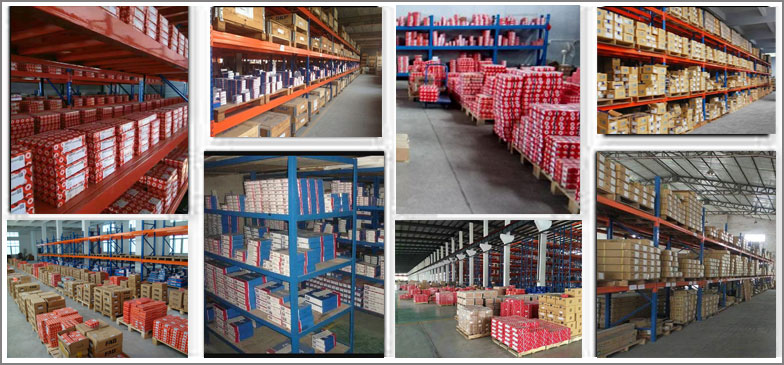Factors influencing SKF import bearings grinding affected layer

We can provide free samples . Please contact Email for any inquiries
According to the formation mechanism of SKF bearing surface grinding metamorphic layer, the main factors affecting the SKF import bearings grinding affected layer is heat and grinding forces and grinding effect.
1 grinding heat
In grinding, the grinding wheel and the workpiece contact zone, consume large amounts of energy, grinding heat large, causing local instantaneous high temperature of the grinding zone. Using the instantaneous temperature linear moving heat source theory formula of heat transfer calculation, or the application of infrared ray method and thermocouple measured under the experimental conditions, can be found in the 0.1 ~ 0.001ms instantaneous temperature inside the grinding zone can be up to 1000 ~ 1500 ℃. The instantaneous high temperature this, enough to produce high temperature oxidation surface layer surface depth, the amorphous structure, high temperature tempering, two times quenching, or even burn crack a variety of changes.
(1) surface oxidation layer
Oxygen steel surface under the action of high temperature instantaneous and in the air, ascending into very thin (20 ~ 30nm) of the iron oxide layer. Worthy of note is the result of the test of total thickness of oxide layer thickness and surface grinding affected layer is a corresponding relationship. This shows that the thickness of the oxide layer and the grinding process is directly related to, is an important symbol of grinding quality.
(2) amorphous layer
The instantaneous high temperature of the grinding zone so that the workpiece surface reach the molten state, metal molecular molten flow is evenly coated on the surface, and the base metal to speed cooling fast, forming a thin layer of amorphous layer. It has high hardness and toughness, but it was only about 10nm, it is easy to be removed in the precision grinding.
(3) high temperature tempering layer
The instantaneous high temperature of the grinding zone can make certain the depth of surface (10 ~ 100nm) is heated above the tempering temperature of workpiece. At the austenitizing temperature did not reach the case, with the heating temperature increasing, the surface by changing layer will produce corresponding with the heating temperature and tempering or high temperature tempering microstructure, hardness decreased. The heating temperature is higher, the hardness decreases more.
(4) two layers of hardened layer
When the instantaneous temperature of the grinding zone the workpiece surface layer is heated to the austenitizing temperature (Ac1) above, the layer of austenitic organization in the subsequent cooling process, again by quenching into martensite. There are generally two times quenching the workpiece burn, under the second quenching layer must be high temperature tempering layer of very low hardness.
(5) the grinding crack
Two times quenching burn will make the surface layer stress changes. Two quenched region in the state of compression, the following high temperature tempering zone material has the largest tensile stress, it is most likely to occur where the core crack. Most likely crack propagation along the original austenite grain boundary. Serious burns may lead to crack the whole grinding surface (a crack) cause the scrap.
The metamorphic layer of 2 grinding force
In the grinding process, the workpiece surface layer will be cutting force, grinding wheel compression force and friction force. Especially after the two effects, the surface layer is formed of plastic deformation layer and hardening layer strong directionality. These residual metamorphic layer is bound to affect the surface layer stress changes.
(1) cold plastic deformation layer
In the grinding process, every moment particle is equivalent to a cutting edge. But in many cases, rake angle of cutting edge is negative, abrasive except cutting action, is to make the workpiece surface under compression (plow effect), make the surface plastic deformation layer was left. The deformation degree of deformation layer will increase with the degree of blunted grinding wheel and grinding feed.
(2) a thermoplastic deformation (or high temperature deformation) layer
The instantaneous temperature of grinding heat formed in the working surface, the surface layer of the elastic limit of certain depth decreased sharply, even to the extent of loss of elasticity. The surface in the grinding force, especially the compression force and friction effect, caused by free extension, of base metal, surface is compressed (more plough), in the surface layer caused by plastic deformation. High temperature plastic deformation invariant in the grinding process, and increased with the increase of the workpiece surface temperature.
(3) the work hardening layer
Sometimes with micro hardness and metallographic analysis can be found, because the machining deformation of surface layer hardness caused by elevated.
In addition to grinding, surface decarburization layer casting and heat treatment heating caused by processing later, if not be completely removed, residue on the surface of the workpiece will also cause surface soft, contributed to the early failure of SKF imported bearings




